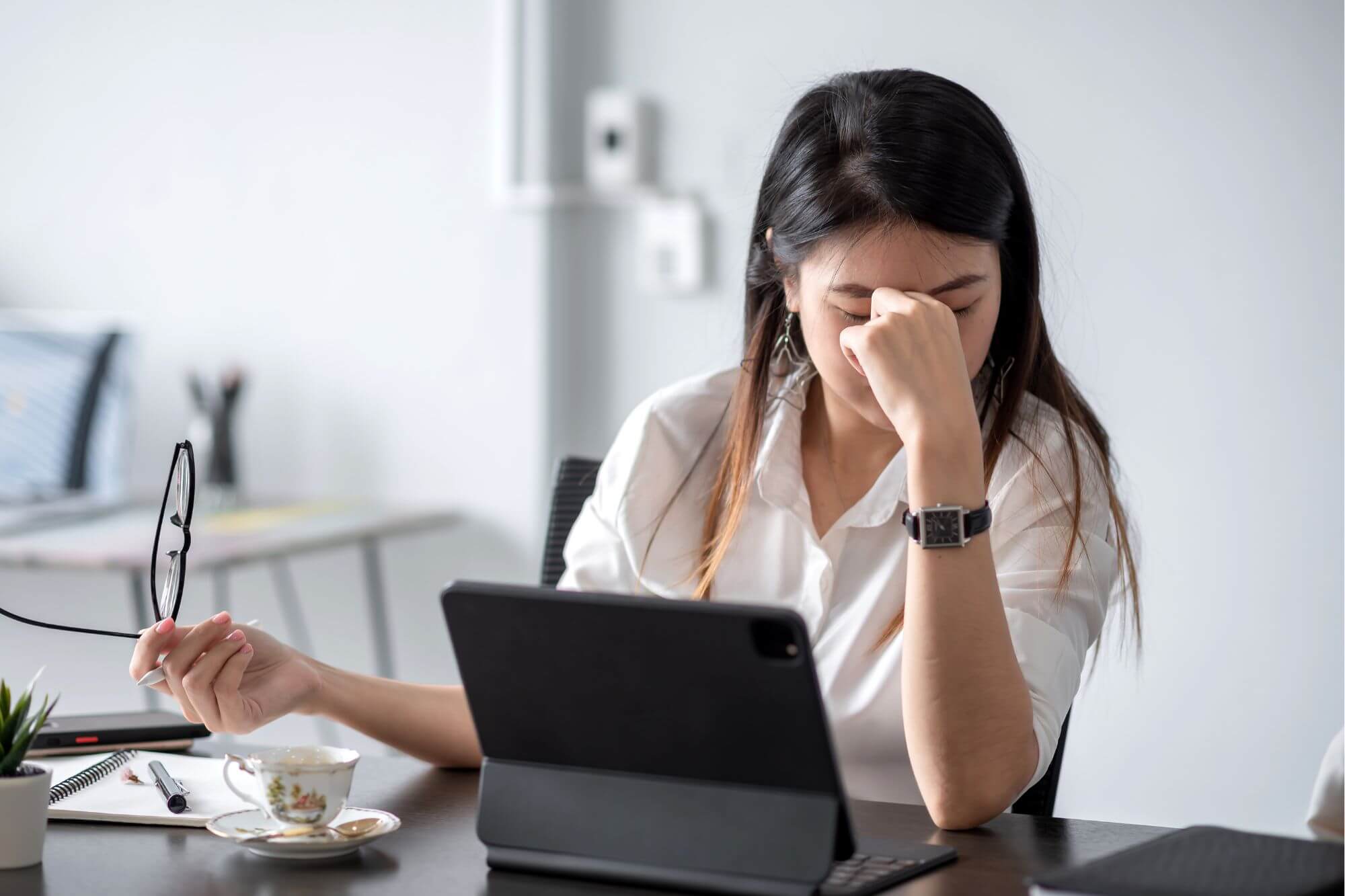
Introduction
Low back pain is extremely common around the world and affects 8 out of 10 adults worldwide. It can be classified into three parts. It can be short term, medium term and long term (chronic). Short-term pain usually goes away quickly, while medium-term pain may last longer and may resolve temporarily. Chronic pain is constantly uncomfortable, making life quite challenging.
Low back pain is a leading cause of disability globally, and pain levels vary from person to person. This usually happens when something goes wrong with the muscles, bones, discs, nerves or muscles of your lower back.
Back pain can be mild or severe but when it becomes really severe, it can disrupt your daily life, even your sleep.
Symptoms

Common Symptoms of Lower Back Pain include :
- Lower back stiffness or muscle spasms
- Difficulty with daily activities like sitting or sleeping
- muscle stiffness and strain
- Back pain as a result of an injury or incident
- bulging or slipped disc
- nerve pain (sciatica)
- weakness in legs
- Swelling
Causes

Sometimes, we don’t know exactly why our lower back hurts. Although sore back pain is usually not a major medical problem and often resolves on its own, it can be distressing when it disrupts our daily lives. Lower back pain or strain Can arise from a variety of factors, including:
- wrong sleeping position
- poor posture
- Age and genetics
- weight gain
- poor quality of mattress & pillow
- lack of proper lumbar support
- muscle imbalance
- Spinal cord injury
- unhealthy lifestyle
Solutions for Lower Back Pain
- Correct sleeping position
- Selection of quality mattress and pillow support
- Use proper lumbar support
- Replace worn out mattress
- Adopt a healthy lifestyle
Lower back pain causes trouble all the time but at night it is a very terrible condition as it is very difficult to deal with sore lower back and sciatica and it is also difficult to find a comfortable position to sleep at that time. Some medicines for back pain also do not help. Your sleeping position is often associated with severe lower back pain. Your sleeping posture and the right mattress and pillow can work wonders in reducing that pain. In this blog, we will explore how to sleep comfortably with lower back pain and provide the top sleeping tips to reduce back pain and improve the quality of your sleep.
1. Correct Sleeping Positions
Correct sleeping position is important because with a little care we can prevent lower back pain. Below, we’ll show you several ways to help avoid and reduce lower back discomfort.
A) Side Sleeping

Sleeping on your side is a recommended position, but there is often confusion about whether sleeping on the left or right side is best. To solve this, consider your health condition. If you do not have any particular health problem, it is recommended to sleep on the left side for best health and comfort. However, if you have health concerns, sleeping on your right side may be a suitable option. Additionally, if you are in good health but don’t want to stay on one side all night, you can change sides as needed. Overall, prefer sleeping on your left side but feel free to change your position if necessary.
Sleeping on your side with a pillow between your legs is good for reducing lower back pain as it takes pressure off your back and hips, making you feel better. This position also helps your brain remain healthy. Additionally, it reduces snoring and may help with sleep apnea. That’s why sleeping on your side is comfortable and good for you
B) Sleeping on Your Back

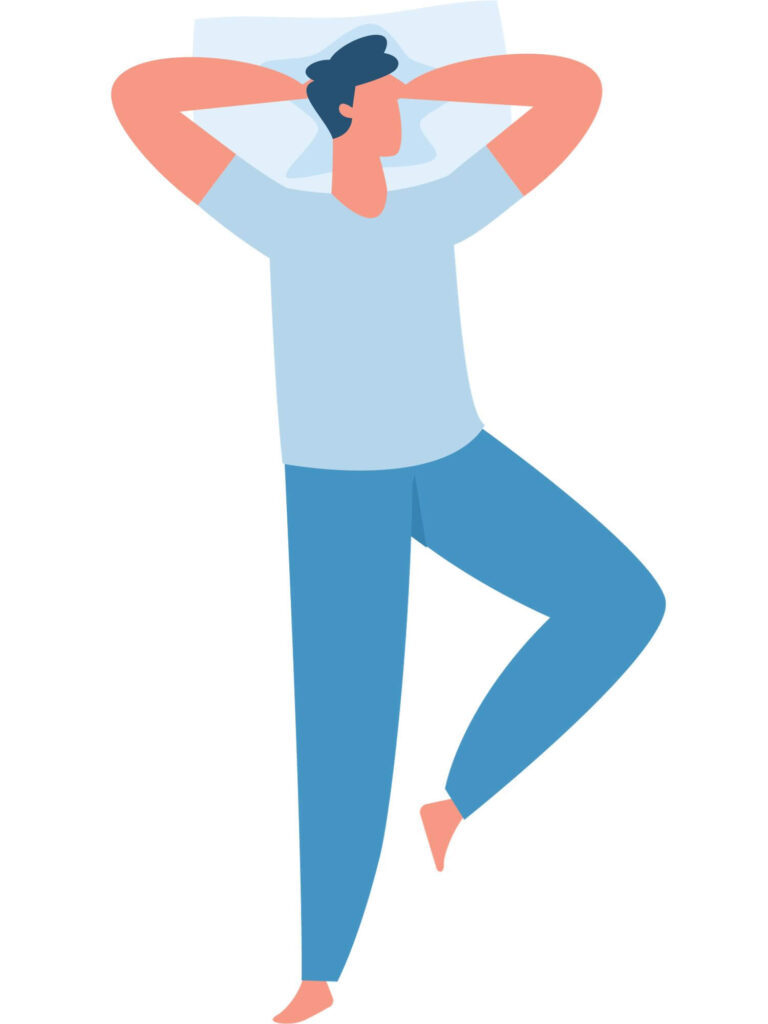
Sleeping on your back is a top choice for reducing lower back pain due to its remarkable benefits. This is how it works:
Maintains natural spinal curve – This position supports the natural curvature of your spine, keeping it from twisting or straining during sleep.
Even distribution of weight – When you lie on your back, your body weight is distributed evenly on the mattress. This helps reduce any undue pressure on your lower back.
Better spinal alignment – Sleeping on the back leads to proper spinal alignment. This alignment, in turn, reduces stress on your lumbar region, which is often a source of lower back discomfort.
Knee pillow support – Placing a pillow under your knees is a smart move. This not only provides added comfort but also prevents your lower back from bending too much, which can be a common cause of pain.
When you add up all of these factors, it’s easy to see why sleeping on your back is a great option for anyone looking for relief from lower back pain. It is a simple and effective way to promote better sleep and feel refreshed and pain-free in the morning.
C) Fetal position for lower back pain


It is generally said that fetal position should be avoided, here we tell you its pros and cons
Benefits (good)
Pressure Relief – Curling up in the fetal position can relieve pressure on the lower back and gently stretch the spine, which may provide relief for some people.
Relaxation – Many people find this position relaxing and comfortable, which improves sleep quality.
Reduction in snoring – Like sleeping on your side, this may reduce snoring, which will benefit people with sleep apnea.
Shortcomings (bad)
Spinal curvature – Excessive curvature of the spine can increase back pain for some people.
Neck and shoulder problems – Tight curling can put pressure on the neck and shoulders, causing discomfort.
Breathing challenges – This can restrict the expansion of the lungs, causing difficulty breathing in some cases.
In short, whether fetal position is good or bad for lower back pain varies from person to person. This may provide relief for some, but for others, it may increase discomfort or lead to other problems. The key is to listen to your body and choose the sleeping position that provides the most comfort and relief.
But still if one wants to sleep in the fetal position, he or she can try the following techniques to reduce its potential negative effects:
Relax your position – Instead of curling up tightly, try to be in a more open and comfortable position. This can reduce the curvature of your spine and reduce stress on your neck and shoulders.
Pillow support – Place a pillow between your knees for better spinal alignment and lower back support.
Neck support – Use a soft, supportive pillow for your head to prevent neck strain.
Experiment – Try variations to find the most comfortable fetal position for your body.
Consult a professional – If persistent discomfort occurs, consult a health care or sleep specialist for proper advice.
In summary, Sleeping like a baby (in the fetal position) can benefit or hurt your lower back, depending on you. Just remember, do what’s comfortable for you. Prioritize comfort and make adjustments as needed for comfortable sleep.
D) Sleeping on your stomach
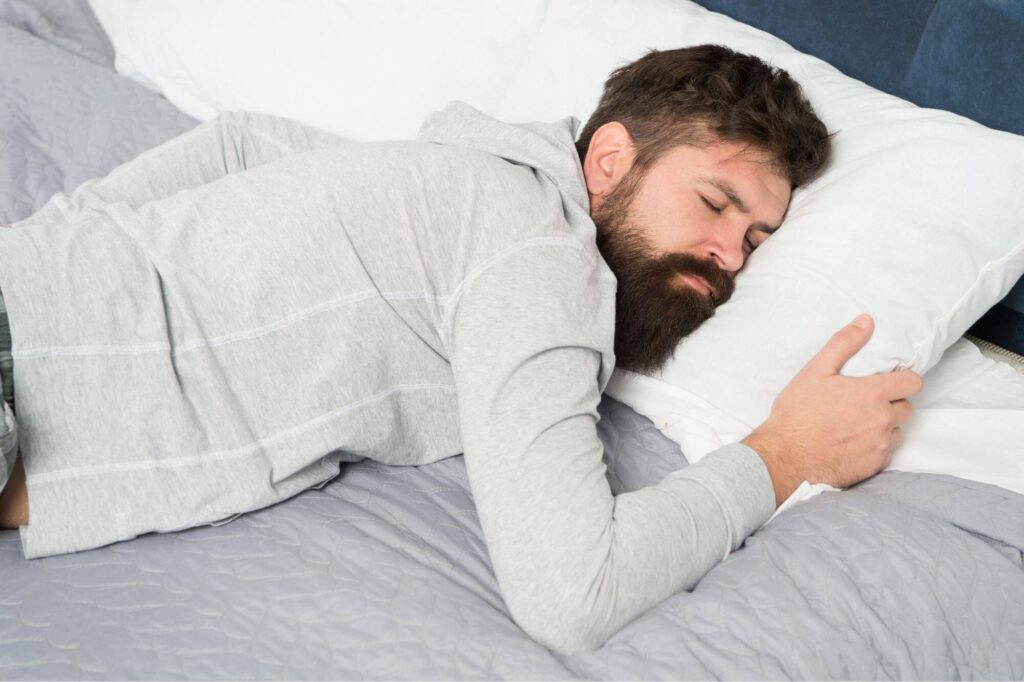
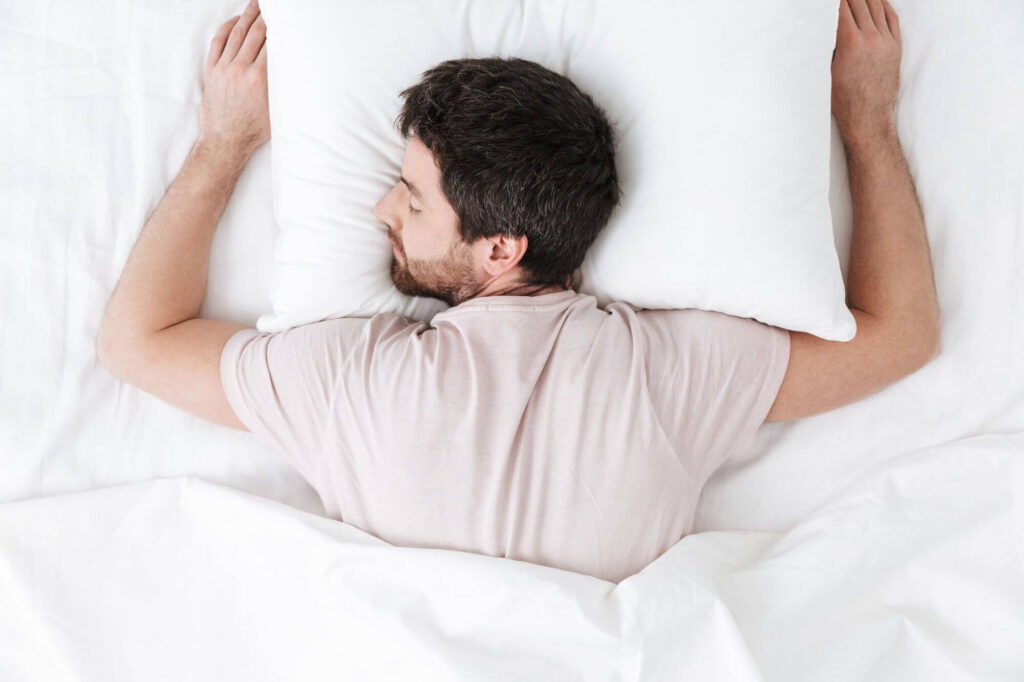
Sometimes many people wake up with pain in the morning. This can happen for a variety of reasons. Sometimes it’s due to an injury or a pre-existing health problem you have. Sometimes, it’s because of your sleeping position, especially if you sleep on your stomach.
Sleeping on your stomach is not the best option when you have lower back pain. Here are some reasons:
Spinal alignment – Sleeping on your stomach can put pressure on your spine and neck, causing discomfort.
Turning the head – You have to turn your head to the side, which can put pressure on your neck.
Pressure on organs – This can put pressure on your organs, reducing your ability to breathe and digest.
Neck Pain – It is common to wake up with neck pain due to turning the head.
Lack of support – In this condition your spine does not get the support it needs.
Muscle strain – This can cause strain in your muscles, which can lead to back pain.
Nerve pressure – Sleeping on your stomach can compress nerves, causing discomfort.
Better Options – Other positions, such as sleeping on the back or side, are often better for relieving lower back pain.
Try to understand when you sleep on your stomach, your middle part sinks into the bed due to its weight. Due to this, your back becomes crooked and your spine bends completely. When your spine is not straight, it can cause tension and leave you feeling aches and pains when you wake up.
If you experience lower back pain, avoid sleeping on your stomach as it can put pressure on your neck, back and shoulders. Instead, try different sleeping positions for relief, and if you must sleep on your stomach, place a thin pillow under your head to relieve neck pressure and make it more comfortable for your back.
The two most popular sleeping positions are back sleeping and side sleeping, both of which are better for your back and neck than stomach and fetal sleeping positions.
2. Selection of Quality Mattress and Pillow Support
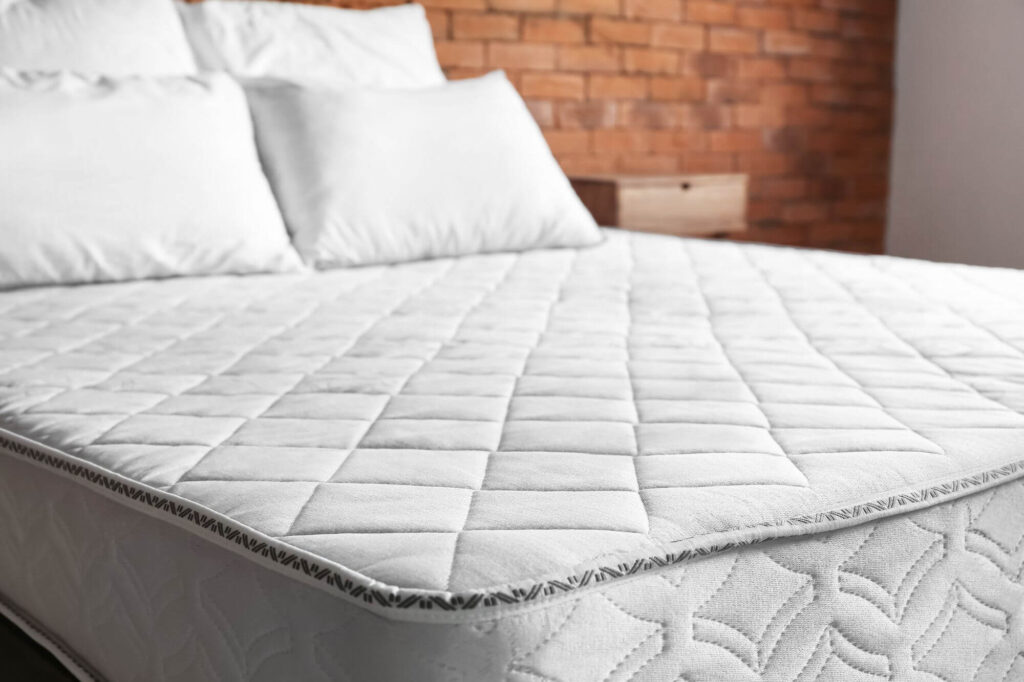
It is important to select a best quality mattress and pillow that provide proper support. Medium-firm mattresses and pillows are often recommended for individuals with lower back pain as it not only provides relief from back pain but also makes one feel better.
It is better to sleep on the side with a pillow between the knees. If you feel a gap between your waist and the mattress, you can use another small pillow for support. It keeps your spine, pelvis and hips aligned, reducing pressure and preventing unwanted curvature of the spine. This is a simple tip to help your back feel better, but be sure to use a medium-firm pillow as is usually recommended for better spinal alignment and comfort. It should be supportive but not too hard or too soft.
3. Protecting Your Back when Entering and Exiting Bed

It is important to be careful about bedtime and getting out of bed, especially if you have lower back pain. Making fast, jerky movements or bending your waist can increase your problem. To stay safe and reduce pain, be sure to:
- Enter and exit your bed slowly and gently.
- Avoid bending forward suddenly.
- Consider doing some light stretches before bed to prepare your back for rest. This may help reduce potential discomfort.
4. Replace Worn Out Mattress


Replacing a worn mattress involves discarding an old and well-used mattress and replacing it with a new one. A “worn out” mattress is one that has been used for a long time and has lost its original comfort and support, making it less effective at providing a good night’s sleep. It is often recommended to replace it with a new mattress to improve sleep quality and overall comfort.
5. Adopt a Healthy Lifestyle

It is important to adopt a healthy lifestyle to prevent or reduce lower back pain during sleep. Here’s what you can do to make your lower back feel better while you sleep:-
Stay active – Do activities like brisk walking and light stretching to keep your back healthy.
Eat well – Eat well to maintain a healthy weight. It helps your back.
Watch how you sit and lie down – Pay attention to your posture while sitting or lying down, especially while sleeping.
Get a good mattress – Invest in a mattress that supports the natural curve of your back and use pillows that keep your neck and spine in a comfortable position.
Reduce stress – Try to stay stress-free or learn techniques to reduce the habit of overthinking, because when you think too much about anything, whether it is your past or future, it can have a negative impact on your health. If you’re already struggling with any health problems, stress can make them worse, so it’s important to focus on being happy and finding ways to reduce stress.
These simple steps can make a big difference in getting a good night’s sleep with less back pain.
In short, if you follow these easy steps, you can sleep better, even with back pain. So after implementing these steps you can welcome a happy life and say goodbye to troubles. We hope these tips help you enjoy a better sleep every night.







